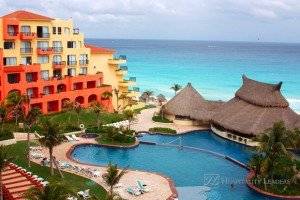
Synopsis
The report provides detailed market analysis, information and insights, including:
? Historic and forecast tourist volumes covering the entire Mexican travel and tourism sector
? Detailed analysis of tourist spending patterns in Mexico
? The total, direct and indirect tourism output generated by each category within the Mexican travel and tourism sector
? Employment and salary trends for various categories in the Mexican travel and tourism sector such as accommodation, sightseeing and entertainment, foodservice, transportation, retail, travel intermediaries and others
? Detailed market classification across each category with analysis using similar metrics
? Detailed analysis of the airline, hotel, car rental and travel intermediaries industries
Summary
Despite a decline in 2009 due to the financial crisis, the Mexican travel and tourism sector performed well during the review period (2008-2012). Inbound trips to Mexico recovered to register a CAGR of 0.52%, and outbound tourist volumes posted a CAGR of 1.09% during the same period. Promotional activities by the tourism authority, coupled with relatively stable economic conditions, were the key growth drivers. According to the World Travel and Tourism Council (WTTC), tourism accounted for 12.5% of the nation’s GDP and 13.9% of its total employment in 2012.
Scope
This report provides an extensive analysis related to tourism demands and flows in Mexico:
? It details historical values for the Mexican tourism sector for 2008-2012, along with forecast figures for 2013-2017
? It provides comprehensive analysis of travel and tourism demand factors with values for both the 2008-2012 review period and the 2013-2017 forecast period
? The report provides a detailed analysis and forecast of domestic, inbound and outbound tourist flows in Mexico
? It provides employment and salary trends for various categories of the travel and tourism sector
? It provides comprehensive analysis of the trends in the airline, hotel, car rental and travel intermediaries industries with values for both the 2008-2012 review period and the 2013-2017 forecast period
Key Highlights
? Mexico’s unemployment rate eased from 5.5% in 2009 to 5% in 2012, suggesting a gradual improvement in the labor market. Declining labor costs brought about an increase in the total number of employed persons from 46.6 million in 2011 to 48.1 million in 2012, showing a growth of 3.3%. The unemployment rate is expected to average about 4.4% to 4.8% in the next five years.
? Mexico’s North American neighbors play a major role in tourism activity within the country. Realizing their importance, the Mexican government is taking steps to increase the volume of tourists arriving from the US and Canada. In 2012, Mexico welcomed a total of 18.4 million inbound tourists from the US and 1.3 million from Canada. The Mexican tourism agency launched a ?Mexico Taxi Project’ campaign in an attempt to change the perception of North Americans towards Mexico and to attract more tourists.
? Capital investment in tourism increased from MXN209.3 billion (US$16.6 billion) in 2010 to MXN228.2 billion (US$17.3 billion) in 2012, due to government measures to promote tourism. These measures included campaigns sponsored by the Mexico Tourism Board to simultaneously attract international arrivals and promote domestic tourism.
? Domestic tourism plays a vital role in Mexico’s economy. In 2012, Mexico registered 200.4 million domestic trips, while the volume of outbound trips measured 194.4 million. Domestic trip flows are high compared to inbound trip volumes. Key festivals include Easter, Christmas and New Year periods when many Mexican citizens visit family and friends.
? The Ministry of Tourism designated 2011 as the Year of Tourism in Mexico. With the Pan-American Games held in October 2011 in Guadalajara and Puerto Vallarta, the government promoted Mexico as a safe destination for international visitors. Recognizing the importance of tourism to the country’s economy in 2011, the Mexican government initiated a US$30 million campaign to attract international visitors to tourist locations.
? The US and Spain, which are the most visited countries by Mexicans, have stringent visa requirements for Mexican tourists. Visa rules and processing remain a cumbersome activity for the Mexican middle-class population entering the US and Canada, as Mexico is currently not included in the US Visa Waiver Program.
? There has been growth in aviation capacity in Mexico, especially in recent years. In August 2013 Aeromexico Airlines increased its fleet size by one Boeing 787-8 jet. The airline has also planned to add another 19 Boeing 787-8 jet by the end of 2019. In 2011-2012, Interjet and Volaris have each ordered more than 40 Airbus jets.
? Mexico’s accommodation industry has evolved gradually over the last decade, with significant investments in the region resulting in the expansion of existing hotels and the opening of new ones. In July 2013, US-based wholesale vacation provider Apple Leisure Group announced plans to invest US$600 million in six tourist projects in Mexico. Other structural economic changes such as improvements in air and road infrastructure have also increased demand for hotels.
? Cancun is the primary location for car rentals in Mexico, with around 70 car rental companies and 5,000 taxicabs. Mexico’s several well-established car rental companies serve customers at airports and metropolitan locations in major commercial markets including Mexico City, Guadalajara, Hermosillo and Monterrey, as well as leading tourism destinations such as Cancun, Mazatlan, Cozumel, Riviera Maya, Los Cabos and Puerto Vallarta.
? The growth of e-commerce is making it increasingly important for travel agents and tour operators to use IT applications to arrange travel bookings. More are expected to do so over the forecast period. Increasing internet penetration rates are the reason for the strong growth of online travel bookings. According to Internet World Stats data from June 2012, there were 42.0 million internet users in Mexico, equal to 36.5% of the total population. Research by comScore indicates that the average Mexican spent 28 hours online in March 2012.
Click here to read more.

